- Home
- Patrick Robinson
Hunter Killer Page 25
Hunter Killer Read online
Page 25
“Thank you, sir. I’ll wait to hear from you.”
“’Bout an hour,” said the CNO. “By the way, is this for the Big Man?”
“No, sir. It’s for Admiral Morris.”
“Same thing,” said Alan Dickson. “Give him my best.”
The giant shadow of Arnold Morgan, which had hung over the United States Defense Department for so many years, had not receded. And every senior naval officer in the country knew of Morgan’s continued obsession with submarines and their activities.
The smallest inquiry from the National Security Agency involving submarines—anyone’s submarines—usually prompted the question “This for the Big Man?” even though Arnold had been retired for several months. Even though he had not sat in the big chair at Fort Meade for several years. He had never quite left. And a lot of very senior people, including the President, wished to hell he’d come back.
One hour later, SUBLANT put Jimmy Ramshawe’s information on the Net to Fort Meade. The French sent submarines through Suez and into the Red Sea about four times every six months. Four in ten returned the way they had arrived, back through the canal and on to either the Toulouse Navy yards, in the Mediterranean, or Submarine Fleet Headquarters, in Brest.
The other six always headed out into the Gulf of Aden and usually went south, to the French base at La Réunion. Occasionally a French underwater ship headed up into the Gulf of Iran, but not often.
The United States Navy had no record of any French submarine exiting Bab el Mandeb sub-surface. According to the analysts at SUBLANT, no one particularly liked making that voyage below the surface. And in five years, U.S. Navy surveillance had always picked up any French submarine heading south out of the Red Sea on the surface of the water; although they had three times recorded Rubis-Class ships at periscope depth on satellite pictures.
Jimmy Ramshawe hurried back to the Director’s office, turning over in his mind the now unassailable truth that France had put two guided-missile submarines through Suez with ample time to creep quietly into position and lambaste the Saudi oil industry.
This did not of course mean that they had done so. But that bloody Frog in the Desert was looking a lot more menacing right now. At least that was the opinion of Lt. Cdr. James Ramshawe.
Four minutes later, Admiral Morris instructed Ramshawe to keep the Big Man informed, but above all, to find out what he thought.
TUESDAY, MARCH 23, MIDDAY
KHAMIS MUSHAYT BAZAAR
Mishari al Ardh, at the age of twenty-four, was a market trader with his father. Their stall was always busy, selling fresh dates and a mountain of local fruits and vegetables. The old town, which stood more than 6,000 feet above sea level, enjoyed afternoon rain in March and August, which put local producers way, way in front of their brethren in the hot sandy deserts to the north.
Today was especially hard work. It seemed the news from the oil fields was so bad that people had developed a siege mentality and were ordering more of everything, much more than their families required—the way it is all over the world when the normal rhythms of daily life seem threatened. The Khamis Mushayt marketplace was seething with activity, much like gas stations in the United States.
Mishari was trying to bring order to five wooden cases of dates when a friend of his, Ahmed, a local boy his age, came rushing through the narrow street and beckoned him to cross over and speak with him.
Both young men were freedom fighters for al-Qaeda. Mishari crossed the street and accepted the folded piece of paper Ahmed handed him, and the terse instruction “Get this to General Rashood, on the heights, now.”
Mishari walked to his father and spoke to him briefly. Then he walked through an alleyway to a parking lot where the aged family flatbed truck was kept. He jumped aboard and gunned it out onto the main road, deeper into the hills, up toward the village of Osha Mushayt, which was situated a mile from the al-Qaeda “hide” where General Rashood and his men were preparing for the attack on the air base on Thursday night.
He left the road after three miles and headed straight down the old desert trail to Osha. When he arrived he kept going, straight through the town and out into some really rough desert. Five minutes later he pulled up to the guard post and was immediately waved through. He came up here most days, with fresh supplies and, usually, the morning newspaper.
Mishari parked to the north of the camp and walked through to speak to the tall Bedouin who commanded it. He explained that a message had been dictated through the al-Qaeda network in Riyadh, by phone to Ahmed, who had written it down and requested that it be shown to General Rashood as soon as possible.
The Bedouin thanked Mishari gracefully and went directly to the General, who unfolded the notepaper and read to himself: Situation on streets here volatile. King might want his soldiers. Can’t risk that. Essential you go tonight. We have clearance from the curator. I’ll go first thing in the morning. Godspeed, Ravi. Le Chasseur.
General Rashood walked to one of the barbecues where the cooks were preparing the midday meal for everyone, and he slipped the note through the iron grill and watched it curl up and then burst into flame, directly below a roasting leg of lamb.
Then he turned to the Bedouin and said softly, “Okay, my friend. Our work is done here. Call a staff meeting right now. We attack tonight. And may Allah go with us.”
SAME DAY, 1400
RIYADH
Col. Jacques Gamoudi sat in the shaded tent that housed the Crown Prince out on the desert floor. They both knew the message to the General was now delivered. They could only wait to hear that the Khamis Mushayt Military City and Air Base had fallen, and then they would move, hard and fast.
They had possibly thirteen hours to wait, and Prince Nasir would have to retire to one of the city palaces in order to be on the spot when the news came through. It would not be necessary to wait until General Rashood made contact. The military networks would be much quicker.
But when the news did arrive, they had to launch their attack on the royal palace. And at the precise, correct time, Prince Nasir must make his broadcast, announcing the death of the King and the shining future that now awaited the country. They would rebuild their oil fortunes.
In accordance with our ancient laws, as Crown Prince, I have assumed leadership of our country. I have taken my vows with the elders of the Council. And I have sworn before God to uphold our laws, both secular and religious. I am both your humble servant and proud leader, King Nasir of Saudi Arabia.
With those words the lives of 30,000 Saudi princes would never be the same. And neither would there ever be such unashamed opulence associated with the ruler of the desert kingdom. In his own way, Prince Nasir intended to avenge the disgraceful grandeur of the recent kings of his nation.
Meanwhile, in the busy streets to the south of Dir’aiyah, the city of Riyadh was once more in the throes of self-destruction, vast mobs of citizens again rioting, hurling stones and bottles, overturning cars.
At 3 P.M. (local) the king ordered the Army to take up a position of high alert. Like everyone else, he feared some sort of invasion might be imminent. And still no one had the remotest idea who was responsible for the destruction of the oil industry.
In the military cities of Tabuk in the northwest, King Khalid in the northeast, and Khamis Mushayt in the southwest, troops deployed immediately into pre-planned defensive positions. However, there were so many deficiencies in manpower and equipment that only around 65 to 70 percent of the total force managed to muster.
The King ordered naval forces at sea to form a defensive line around the coast, and his Air Minister ordered surveillance flights. There were not enough ships to defend anything much bigger than Long Island on a calm day, and the surveillance flights reported nothing unusual.
Even the helicopter patrols that the National Guard had ordered to overfly the city reported nothing except civilian unrest, despite one of them making a detour almost as far to the north as the ruins of Dir’aiyah. The pilot presumably co
nsidered the remains of the ancient city largely a waste of time.
There was no sign of the Saudi Air Force. Its fleets of fighters and fighter-bombers remained grounded, for one critical reason. For many years the Air Force had been commanded by royal princes, many of whom had been sent to train in England. And now these particular scions of the al-Saud family were quietly on their way out of the country. Vital instructions were simply not being issued to the pilots by these royal chiefs.
There was an element of frustration, of course, because there was nothing visible for the fighter-bombers to attack, but there was also an element of cowardice. These minor royals had been brought up to a life of unimaginable luxury, and their principal concern was for their own safety.
But the Air Force had another Achilles’ heel. The ground staff had no wish to become involved in a war in which they might conceivably be bombed during the course of some kind of internal power struggle. Flight technicians, air traffic controllers, and personnel concerned with fueling and arming the aircraft were just melting away into the vast deserts that surrounded the major Saudi bases.
The only real activity within the Air Force was at the Riyadh base, where Number One Squadron, Royal Flight, was located. This fleet contained several Boeing 737s and 747s, British Aerospace executive jets, and other chartered aircraft. All of them were busy ferrying senior members of the royal family to neighboring Arab countries, Jordan, Syria, and Egypt. In some cases they were flying as far afield as Morocco, Switzerland, Spain, and France.
Inside the blasted ramparts of Dir’aiyah, under heavy camouflage, Colonel Gamoudi was bringing his force to a high state of readiness. He had great faith in General Rashood, in the south, and as darkness fell his petroleum tanker teams worked on the tasks of refueling the tanks and armored vehicles and loading the trucks with weapons and ammunition. He had always planned to leave this part of the operation to the last minute. Even if anyone had observed the convoy of gas tankers moving through the dusk and into the ruins, it would be far, far too late to do anything about it.
Prince Nasir himself, now in combat uniform—desert boots, fatigues, camouflage jacket—with a red-and-white-checkered ghutra, remained at the heart of the preparations, staying close to Jacques Gamoudi, watching an outstanding professional soldier make ready to capture a city.
TUESDAY, MARCH 23, 1900
YEMENI MOUNTAINS, ABOVE KHAMIS MUSHAYT
Ravi Rashood and his men broke camp as dusk fell over the desert. His sixty-strong troop, including his own Hamas personnel, began the march behind the al-Qaeda militia. Each man’s face was blacked with camouflage cream. They all carried high explosive and their own personal weapons, plus the two big machine guns between teams of four men.
They had considered making the journey to their three separate destinations using trucks, because it was so much quicker. But General Rashood had decided against this. The level of high alert at both the military base and the Air Force base was, he decided, too big a risk. “The only thing worse than failure is discovery,” he told his men. And all the senior officers agreed.
And so they faced the five-mile walk, down to the loop road that crossed the river and ran past both bases before rejoining the road it originally left. They traveled in single file, marching cross-country, staying off the old Bedouin tracks, with two al-Qaeda outriders mounted on camels a mile in front of the leaders, checking for intruders.
At 2100 precisely, there would be a truck breakdown to their right, two miles south of the air base, blocking the only approach from the west. They would cross the road into the rough ground that surrounded the airfield, knowing there could be no danger on their right flank.
Rashood’s men had watched this road every night since their arrival, and nothing had ever come down from the left, from the military base itself. The General supposed there must be an internal road between the Army and the Air Force, and he placed just two sentries with a big machine gun on the left flank beside the road. If any traffic approached, both the vehicle and its passengers would be eliminated instantly.
They reached the road on time, and said good-bye to the sixman command team, the men with the communications equipment that would be essentially their only lifeline if things went badly wrong. The six would take up position on high ground overlooking the air base about a half mile to the north, with the capability of communicating with the General, the al-Qaeda commander, and all three of the demolition force’s team leaders. They could also call up reinforcements in the town of Khamis Mushayt if there were a rescue requirement. General Rashood considered this most unlikely.
The combat teams crossed the road in pitch dark in groups of four, making a run across the blacktop on the command of the leaders. It was 2125 when General Rashood finally crossed the road, the last man to leave the “safe” side of the track.
This was the point where the attacking forces broke up. Maj. Paul Spanier and Maj. Henri Gilbert separated their twelve-strong groups and moved east, for the long walk around the air base to the high bracken at the edge of the wire on the north fence. Ten men who would go in separately and head for the aircraft hangars, then help to fight for the main entrance, would move along behind them. The two wire-cutters marched in the lead with the two French Majors.
General Rashood led his troop to the west to take up position four and a half miles away, close to the main gates of the military base. The al-Qaeda fighters who would launch the diversionary attack at the gates to the air base were under orders to begin at 0055, five minutes before every aircraft on the base was blown to pieces.
Meanwhile, it was al-Qaeda’s task to ensure that the troop carrier trucks were in position, well hidden in the desert, with drivers ready to come in and evacuate the aircraft demolition teams on the north side. The team that blew the hangars and then assisted the al-Qaeda fighters at the gates would ultimately leave through the hills on the north side of the road with the local forces.
Only General Rashood and his twelve-strong attack squadron would remain on the ground after the air base was wiped out. And they would be stationed before the gates of the military city.
The night was cloudy, but the terrain had dried out since a prolonged afternoon rain shower. It was extraordinarily quiet, and General Rashood had scheduled a ten-minute break after the five-mile walk-in from the mountains, not because of the distance but because they had all carried heavy loads of explosives and arms over very uneven ground.
And at the end of this time, the General shook hands with Major Spanier and Major Gilbert and wished them luck. He said good-bye to the al-Qaeda freedom fighters and also to many of the combat troops with whom he had become well acquainted. It was unlikely he would ever meet any of them again.
Upon completion of the operation, the majority of his troops were being flown in three helicopters from the northern slopes of the mountains back into Yemen. The General had authorized this because the Saudis’ surveillance capability in this part of the country would be nonoperational.
As no one had known of their arrival, no one would know of their departure. All of the French troops would return home by air, taking off from the Yemeni capital, San’a, which is situated deep in the interior. Air France flies once a week to this biblical city, said to have been built by Shem, the son of Noah. This week there would be two flights.
General Rashood himself would fly in a Saudi Air Force helicopter directly from the Khamis Mushayt base to Riyadh, where he would join General Gamoudi and Prince Nasir and assist them with the final capitulation of the city.
Meanwhile, there was a great deal of work to do in the southwest. Major Spanier and his team traversed the perimeter of the air base and were in position by 2235. They made contact with the al-Qaeda commander who had the getaway trucks in position. He was accompanied by four armed bodyguards, two of whom would drive the trucks, and they checked radio frequencies with the senior French officer in case there should be an emergency.
By 2250, the wire-cutter detail had clippe
d out an entry point in the fence. There were no lights on out here, on the remotest side of the air field, which General Rashood had considered to be absurd. But this was a very quiet place, and no one had ever even dreamed of attacking it before. Not even the Yemeni in their most virulent mood against the Saudis.
And so, in the pitch dark, Major Gilbert and his eleven men began to move through the wire, racing inward, away from the perimeter road, and then swerving right, into the dark part of the field where the thirty-two British-built Tornadoes were parked in four lines of eight.
The men split into six teams of two each and began their work. Four teams started at the far ends of the four lines. The other two teams concentrated on the eight remaining aircraft, the ones nearest the perimeter, the ones closest to the approaching headlights of the guard vehicles.
The teams on the Tornadoes actually had a far better view of the perimeter road. It was Major Spanier’s group, working in among the F-15s, who were unsighted by the thirty-two Tornadoes and could not see clearly along the road that led back to the hangars.
Which was why General Rashood had two machine gunners right now prostrated behind the wheels of the two F-15s closest to the perimeter. From ground level they could provide cover for both groups. But the moment Maj. Henri Gilbert’s men had completed their work on the first six aircraft, two of the saboteurs would swap their det-cords, explosives, and screwdrivers for machine guns.
They would take up new positions, behind the aircraft wheels at the farthest point, down the perimeter road. No chances. High-explosives men, working on targets, tend to grow preoccupied with their tasks. They need guards.
And one by one they attacked the Saudis’ fighter-bombers. They unscrewed the panels that protected the engines on the starboard side, clipped out a gap in the wires that ran across this side of the block, and clamped on the first of the magnetic bombs that would blast the entire engine asunder. The bomb was of sufficient force to split the engine into two pieces and also to blow out the cockpit and control panels. Under no circumstances would this fighter-bomber ever fly again.

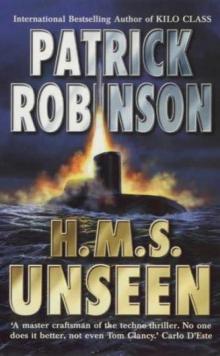 H.M.S. Unseen am-3
H.M.S. Unseen am-3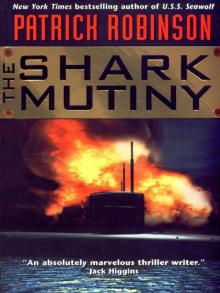 The Shark Mutiny (2001)
The Shark Mutiny (2001)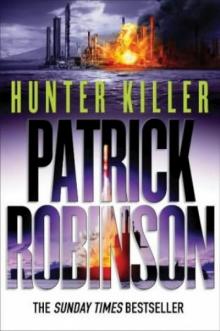 Hunter Killer am-8
Hunter Killer am-8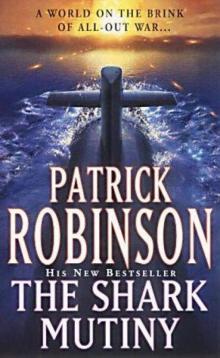 The Shark Mutiny am-5
The Shark Mutiny am-5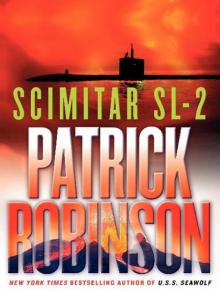 Scimitar SL-2
Scimitar SL-2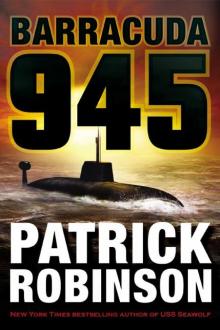 Barracuda 945 am-6
Barracuda 945 am-6 Hunter Killer
Hunter Killer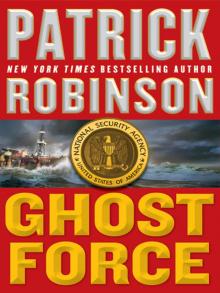 Ghost Force
Ghost Force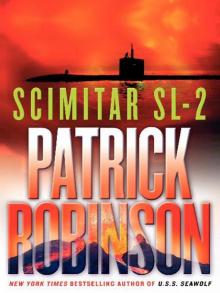 Scimitar SL-2 (2004)
Scimitar SL-2 (2004) Kilo Class am-2
Kilo Class am-2 The Lion of Sabray
The Lion of Sabray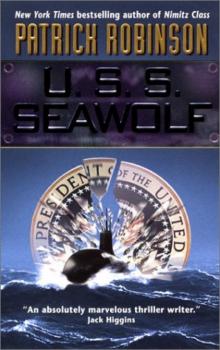 U.S.S. Seawolf am-4
U.S.S. Seawolf am-4 Ghost Force am-9
Ghost Force am-9 To the Death am-10
To the Death am-10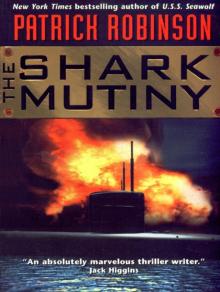 The Shark Mutiny
The Shark Mutiny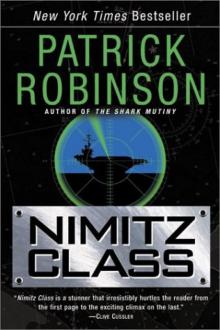 Nimitz Class am-1
Nimitz Class am-1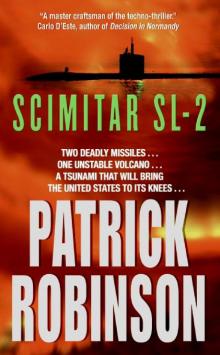 Scimitar SL-2 am-7
Scimitar SL-2 am-7 Barracuda 945
Barracuda 945 Intercept
Intercept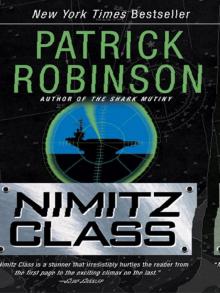 Nimitz Class (1997)
Nimitz Class (1997)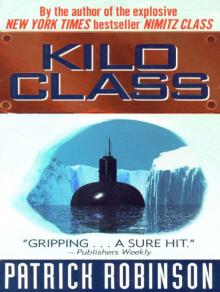 Kilo Class
Kilo Class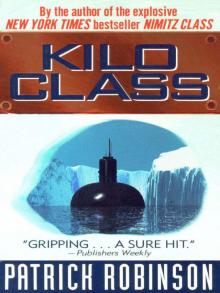 Kilo Class (1998)
Kilo Class (1998) Diamondhead
Diamondhead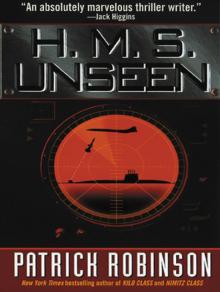 H.M.S. Unseen
H.M.S. Unseen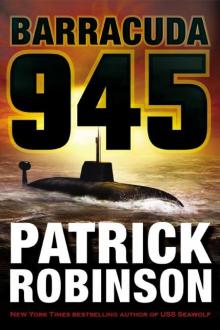 Barracuda 945 (2003)
Barracuda 945 (2003)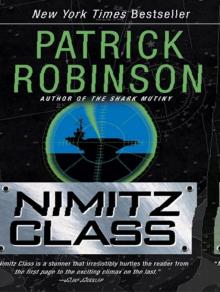 Nimitz Class
Nimitz Class The Delta Solution
The Delta Solution U.S.S. Seawolf
U.S.S. Seawolf